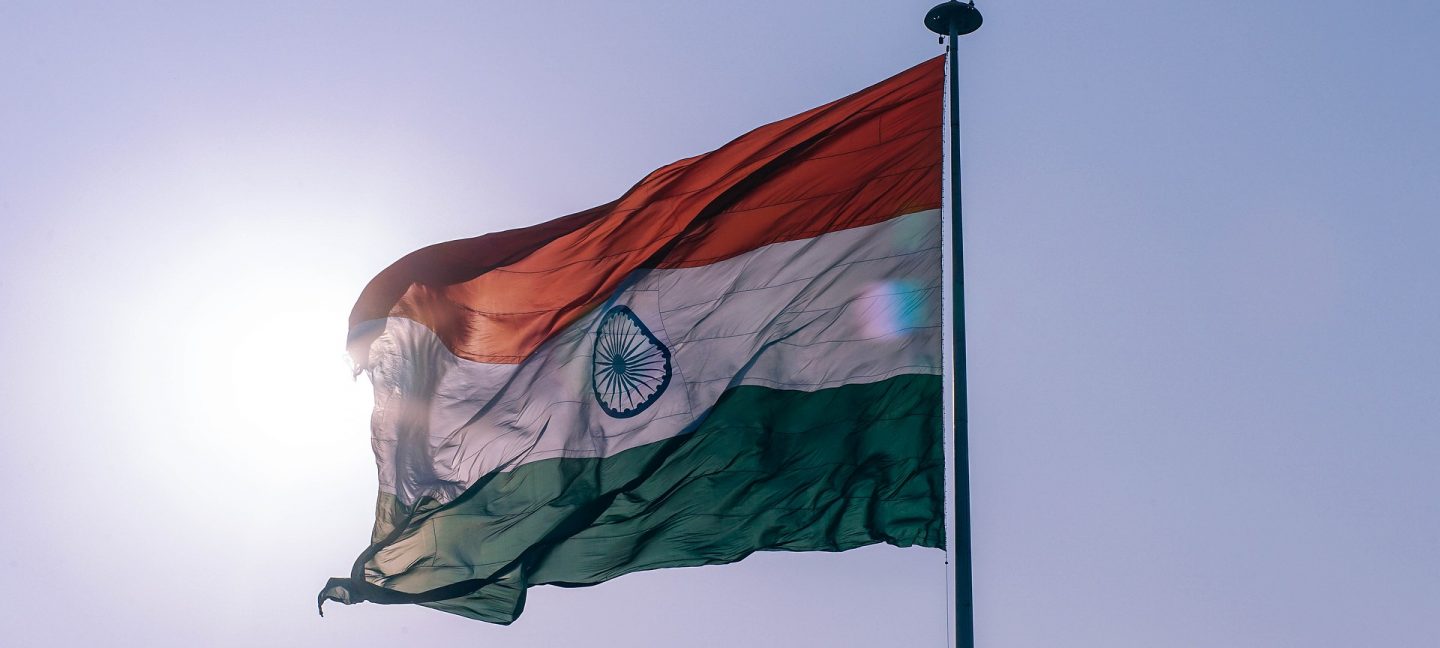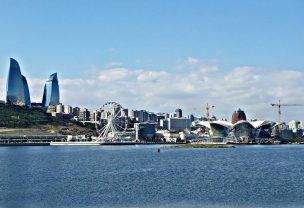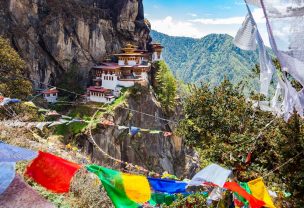Quick facts
- Full name: Republic of India
- Capital: New Delhi
- Largest city: Mumbai
- Official language: Hindi / English
- Area: 3,287,263 km2
- Population: 1,324,171,354
- Currency: Indian Rupee (INR) 1 (INR) = 100 paisa
- Foreign tourists: 14.6 million (2016)
- Travel risks and hazards:Petty and violent crime, dangerous fauna, environmental disasters, unsafe for solo female tourists.
One of the few cradles of civilization, India is the second most populous country on earth. The country has a rich and vibrant history with the oldest known dating back to the Indus valley civilization. Despite relatively low count of tourist for the size of the country, it offers some of the most incredible views on earth and some of the most world famous landmarks like the Taj Mahal, Swaminarayan Akshardham, the Red Fort and much much more.

Traveling info
All people traveling to India are required to have a valid travel document i.e. a passport. Citizens of Bhutan, Nepal, and Maldives (up to 90 days) do not require a visa to enter the country. Other visitors having a Persons of Indian Origin Card are exempt from having a visa to enter India. (list in sources). Citizens of certain countries are eligible for a visa on arrival. Such a visa is valid for 30 days. (list of countries in sources). All other nationals are required to apply for a visa prior to travel. Tourists who choose to drive in India must have their national driving permit which must be held for at least a year. IDP is not required but it is strongly recommended to avoid any misunderstanding and is required in most car rental companies.

Traveling hazards
Driving in India is dangerous. The country leads the world ranking in traffic-related deaths and this includes tourists in India. Driving conditions in India vary from modern standard to unpaved roads. Due to a difficult driving situation in the country tourists should consider hiring a local driver. Although public transports operate almost anywhere it is almost always overcrowded, in addition, vehicles on the roads often miss seating belts and are poorly maintained. Generally, all drivers including pedestrians disregard the road rules. It is particularly dangerous for drivers if they hit a person or a cow (cows are considered untouchable in India) in a crowded area, no matter if it was accidental or not, passersby will attack the vehicle and its occupants. Such scenarios are not at all uncommon. Drivers must watch out for animals which are ever present both in urban areas and out in the country.

Environmental hazards
India is the 7th largest country in the world, its diverse climate is inhabited by many different species of animals. Some of these are seriously dangerous and are best to avoid. There is a constantly growing conflict in India between its human population and wildlife. Elephants and tigers in the country killed at least one person each daily. This is a frightening number however the locals constantly come in conflict with these animals. Bears in India have developed a rather aggressive response because of the predators hunting smaller bears such as the sloth bear, and because of non-stop hostile interaction with humans. Brown bears have also developed a rather aggressive attitude unlike those in Europe. Black bears are the most aggressive and are responsible for numerous attacks in India. Lions inhabit India, however, their range is restricted to the Gir national park. There are only a little over 600 specimens left. There are over 16 venomous snakes in India among which the Indian cobra, King cobra, and the bamboo viper are among the most dangerous in India, however, the saw-scaled viper is responsible for most deaths on earth. Although its venom is not the strongest, it often inhabits densely populated areas killing many who it feels threatened by. There are many venomous spiders in India, some inhabiting urban areas whilst others can only be found in the countryside. It is best to stay cautious upon meeting any spider in India as an untrained eye won’t be able to tell a venomous from non-venomous species. Not only spiders are dangerous in India but there are 5 species of scorpions which are responsible for hundreds of deaths in India yearly. Indian red scorpion is the most lethal in the world and is distributed throughout all of India. Indian fresh and salt waters are full of dangerous creatures. Goonch is a man-sized catfish which has been known to attack people in waters of the Kali Ganga river, especially those of small sizes. Brahmaputra Bull Shark inhabits the rivers of Brahmaputra and Ganges. This large fish is responsible for many serious injuries and fatalities in India. Although this sounds almost like a movie, Indian rivers are infested with red-bellied killers known as Godavari Red Piranhas. There have been no fatal reports however these fish are responsible for attacking many swimmers. Although gharials may look dangerous they generally do not attack humans. There are however two different crocodile species which are responsible for most crocodile attacks on humans. The mugger crocodile inhabits most marshes, rivers, and lakes of India. This is a medium-sized crocodile however it is still responsible for many attacks on humans. The saltwater crocodile is one of the largest apex predators in the world. This prehistoric giant reaches lengths of up to 7 meters and weights of up to 2 tonnes. Almost the entire east coast of India is inhabited by these water monsters. These can be found off in the coastal waters, river mouths and salt marshes. It is strongly recommended to avoid such places. Water sports enthusiasts should stick to designated beaches secured by lifeguards.
India suffers from many different natural disasters. India suffers from earthquakes which mostly occur around the northern part of the country near to the Himalayas. India is also prone to tsunamis with the last most severe occurring in 2004 causing the greatest tsunami devastation known yet affecting numerous countries and killing almost 200 thousand people in the region. Monsoon rains often cause devastating floods which mostly affect agricultural lands resulting in crop devastation. Northwestern part suffers from droughts and the spread of the Thar desert further south. India is also prone to tropical cyclones, particularly the eastern coast.

Health hazards
There are several outbreaks of diseases in India including cholera, typhoid, and malaria. There are vaccinations preventing these diseases which are strongly recommended before visiting India. There is no risk of yellow fever in India however citizens of countries with a risk of yellow fever or visitors who have traveled to the countries with a risk of yellow fever are required to have a yellow fever vaccination proof before they enter India. There are several other vaccinations which are not required but strongly recommended. These include the routine vaccines also known as the MMR vaccine, Japanese encephalitis, hepatitis A and B and rabies vaccine. Visitors should beware that contracting Zika is a possibility. There is no vaccine against Zika. Zika virus is contracted through mosquito bites, therefore, protecting against mosquito bites is very important. Healthcare in India varies across the country and depends on whether it is a state of privately owned. Public hospitals are generally attended by the lower classes, provide poor quality of service and have extremely long waiting lines. Private hospitals especially in large Indian cities provide world-class services and have English speaking staff. These however come at an expense, therefore, it is recommended to purchase medical insurance.
In case of an emergency dial 102.

Crime
India is the 7th largest country in the world spanning over most of the Indian subcontinent and the second most populous. When it comes to crime it really varies on the location and population and particularly gender. Both petty crime and violent crime take place in India. Although Mumbai scored the best in the world in the experiment of returning lost wallets, it is still considered quite bad for pickpocketing and theft, pretty much like any other place in the world. Violent crime is where it gets worse, this particularly applies to the Northern regions including Delhi. Females whether traveling solo or in pairs are not generally safe out after dusk. Sexual assault is common, harassment of women particularly solo travelers is normal. Women should consider traveling in groups or with men. Women should also beware that even during the day they will be approached and asked to take photos, by many. This is particularly the case in cities. Smaller towns and villages will generally not experience as much violent crime. Women can feel much safer in Goa and Mumbai however in other parts of the country revealing clothes and solo traveling is discouraged. It is advised to purchase a cheap good battery cellphone. Fancy phones should be used discreetly. It is also advised to do your homework and prepare some taxi company numbers, have a map and not to wear fanny packs as these screams, lost tourist. Wear a money belt and keep the most money in it. Pickpockets won’t be able to get them. Keep your accommodation address on a piece of paper and best to have it translated into the local language. Most people out in small towns and the country don’t speak English. Traveling a hundred kilometers may mean a complete change of language. India is the most diverse country in the world. In India possession, cultivation, production, distribution is illegal and punishable by jail sentences.

Summary
Although India is an incredible country to travel it might not be safe for solo travelers. Consider traveling in groups or pairs and you’ll be guaranteed the time of your life and unique experiences. Every region in India is like a country of itself to discover. Remember that planning your trip with Travset.com will give you the quickest information about nearest emergency services and will also help you purchase indispensable travel insurance for the trip of your lifetime. Please feel free to comment and share the experiences of your travels with Travset.com.
Sources
(Visa)
https://indianvisaonline.gov.in/visa/index.html
(Vaccinations)
https://wwwnc.cdc.gov/travel/destinations/traveler/none/india








